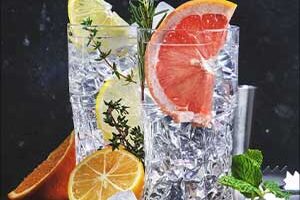

The safest cookware may be a matter of opinion, but those opinions always revolve around just a few different non-toxic cookware types.
Every home cook needs a great set of cookware for preparing all those delicious creations. But even more importantly, the DIY chef needs to consider safety, durability, cost, and functionality when choosing which cookware to stock the kitchen with.
It took us years and many trials with different pots, pans, and bakeware to figure out what we liked best. For this reason, we’ve decided to share what we’ve found during our search for the safest cookware that still performs great. While I can’t tell you which type will be absolutely perfect for you, I’ll touch on the pros and cons of all the safest cookware on the market.
(For information on the types of cookware to avoid, due to health risks, read this article.)
Safest Cookware Options
Cast Iron Cookware
We love our sturdy second-hand cast iron cookware (and use it daily!), but it’s not for everyone.
Pros
We love the way cast iron leaves some foods nice and crispy, or with a caramelized finish. It offers superior heat distribution and retention when cooking. This material can easily and safely go from the stovetop directly into the oven. A nicely seasoned cast iron pan will last forever and food won’t stick to it. Never wash cast iron pans with soap. Simply rinse and scour with these awesome stainless steel scrubbers, then wipe clean after each use. We have purchased all of our cast iron cookware second-hand at great prices.
If you can find older brands, like Griswold, you’ll get all the benefits of cast iron without all the weight. Cooking on cast iron can even add extra iron to your diet, which is helpful for people deficient in this mineral. Tip: used cast iron pans are usually well seasoned and ready for use! This is Matt’s favorite, and it is one of the most proven, and safest cookware choices.
Check out this article for more of our thoughts and tips on using cast iron in your kitchen.
Cons
Many people don’t need extra iron that cast iron cookware will leave in your food. This includes men, people with a condition called hemochromatosis, and women who are not menstruating and losing blood every month. Our bodies don’t eliminate iron naturally (unless donating blood or menstruating regularly), and it can accumulate to toxic levels in some people. However, the iron leaches more into acidic foods and is also dependent on how well a pan is seasoned. Well-seasoned pans have a thin coating that makes them less reactive with foods.
In addition to the iron issue, if cast iron is not seasoned properly it can make foods stick, resulting in a more difficult cleanup. It can also be very heavy to work with and will rust if left wet for a period of time.
Enamel Coated Cast Iron Cookware
Pros
Enameled cast iron doesn’t add iron to foods like non-enameled cast iron pans. (This is only a benefit if you belong to one of the groups of people who doesn’t need extra iron.) These pieces are great for use on the stovetop or the oven. They offer better heat distribution and retention than the other safest cookware types and don’t react with acidic foods like uncoated cast iron. If properly cared for, enamel-coated pieces can last for generations. They don’t need to be seasoned like plain cast iron pans and food won’t stick if the interior has a nicely polished finish.
Cons
These are also heavy since they’re made with cast iron. The finicky enamel finish can be hard to care for. Metal utensils will scratch it, and they will discolor and lose their luster if exposed to extreme temperature changes. (Like boiling something and then immediately running cool water over the pan.)
Some enamel-coated pans are made with cheap enamel that wears out and stains easily, and can also crack or chip off and end up in food. If enamel chips the pan is unsafe. For this reason, we recommend spending the extra money on a piece from a reputable company like our favorite here or this other well-known brand and researching to make sure yours has a warranty before purchasing. That’s the other con – a good quality enamel-coated cast iron piece may come with some sticker shock.
READ RELATED: How Does Hospitalization Affect Children's Academic Performance?
Stainless Steel Safest Cookware
Pros
Stainless steel is inert and will not react with food or alter the flavors of your dishes. This makes it one of the safest cookware options. Stainless steel is very durable and any type of cooking utensil can be used on stainless surfaces without worrying about scratching or ruining a finish. They’re lighter than cast iron pieces and easier to stack and store since there’s no risk of scratching/chipping surfaces. Stainless can be heated to high temperatures, placed in an oven, scrubbed/scraped hard to clean, and the inside surface doesn’t contain harmful carcinogens. You can also wash them with soap or run through the dishwasher.
Cons
They’re not completely non-stick and need a little fat or liquid added when cooking to prevent food from sticking. Cooking results are highly dependent on the thickness of the metal. A thicker or bonded stainless steel pan will cost you more upfront, but is more durable and will last longer. (We have a few pieces from this line that we love.)
Glass Cookware
Pros
When you cook/bake in glass cookware, it will not absorb odors or flavors from the food. Second, it is one of the safest cookware options. Also, you can also be sure glass won’t react with the foods you are cooking. Always be sure you’re using tempered glass, which is strengthened glass made for cooking/baking. After the food cools, you can store it in the refrigerator in your glass non-toxic cookware, leaving less cleanup.
Cons
Glass can be a tad heavy and can break if dropped. Food can stick to the glass if you do not grease it well, and thermal shock is always a possibility – it can break if exposed to temperature extremes too quickly. There is a risk of shattering if you add a liquid to hot glass cookware or if you place it on a cold surface (like granite).
Beware: Some foreign manufacturers may use lead in the production of their cheap glass cookware. Generally, the glass brands made in the U.S. and Europe are the safest cookware options, but do your homework!
Stoneware
Pros
High-quality stoneware is a completely non-toxic type of cookware, safe, and can last forever if cared for. It heats very evenly and becomes nicely seasoned after several uses, creating a non-stick finish. (For the first 5-10 uses you need to grease stoneware well with a fat, but never again after that.) Like cast iron, you should not wash stoneware with soap. Also, you can scrape, wipe, and rinse well with water to clean. Although, I’ve washed mine with soap several times and it has not eliminated the non-stick seasoning. A good-quality stoneware piece doesn’t absorb odors from things like fish. You can get my favorite brand here for a reasonable price.
Cons
Stoneware pieces are a little heavy and can break or crack if not cared for. It can also be one of the pricier types of bakeware. Your stoneware pieces might look a little ugly when seasoned – they will turn a dark brown, sometimes splotchy. (This is actually a positive aspect though, as this indicates seasoning process was successful!) Again, some low-quality stoneware pieces can contain lead (mostly from China), so be sure you purchase from a reputable company. Stoneware made in the USA and Canada is lead-free.
Ceramic Safest Cookware
Pros
High-quality 100% ceramic cookware is non-reactive, non-toxic, and one of the safest cookware choices. Ceramics wear well over time, offer consistent heat, and are dishwasher safe. Surfaces don’t corrode and don’t require a special seasoning process like cast iron or stoneware. You can use any utensil on ceramic cookware, and you can use it to store food in the refrigerator or even the freezer! This is a great brand of ceramic cookware that many health experts rave about.
Cons
Ceramic cookware will be more expensive than most types of cookware. When purchasing, watch for low-quality glazes that contain lead. The lead will leach into food when the cookware has scratches or wear and tear. You’ll find this with many foreign-made pieces, where the same adherence to manufacturing safety standards is subpar. Most U.S.-made ceramic cookware should be safe, but do your research and only purchase 100% ceramic with lead-free glaze.
Last Notes About the Safest Cookware
If you’re wondering which cookware we consider unsafe (or controversial enough to avoid), read more here. When choosing the safest cookware, be sure to buy quality pieces from reputable companies. This way you can find answers to your questions and take advantage of warranties if you need replacements. Also, many foreign-made cookware options contain high levels of dangerous things like lead.
As the consumer, always do your own research when choosing the safest non-toxic cookware for your family!
*******
image credit to Steve Snodgrass
Source: DIY Natural – Food









